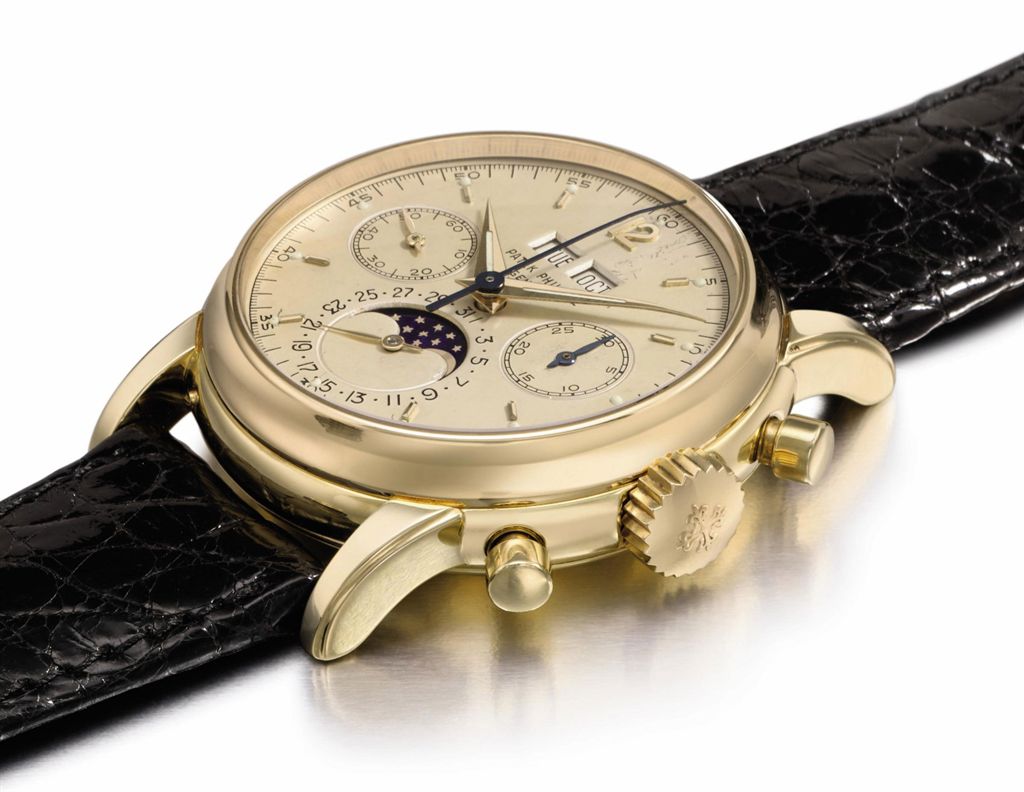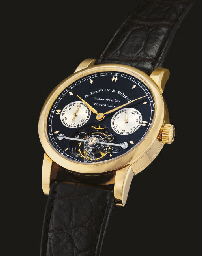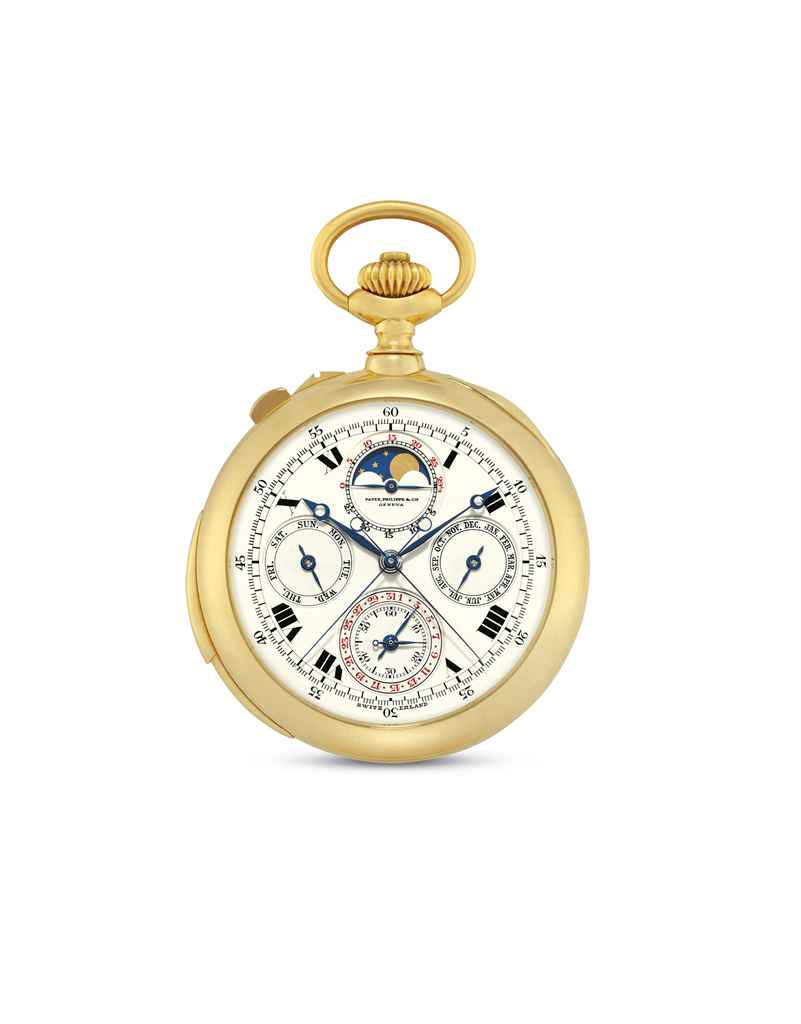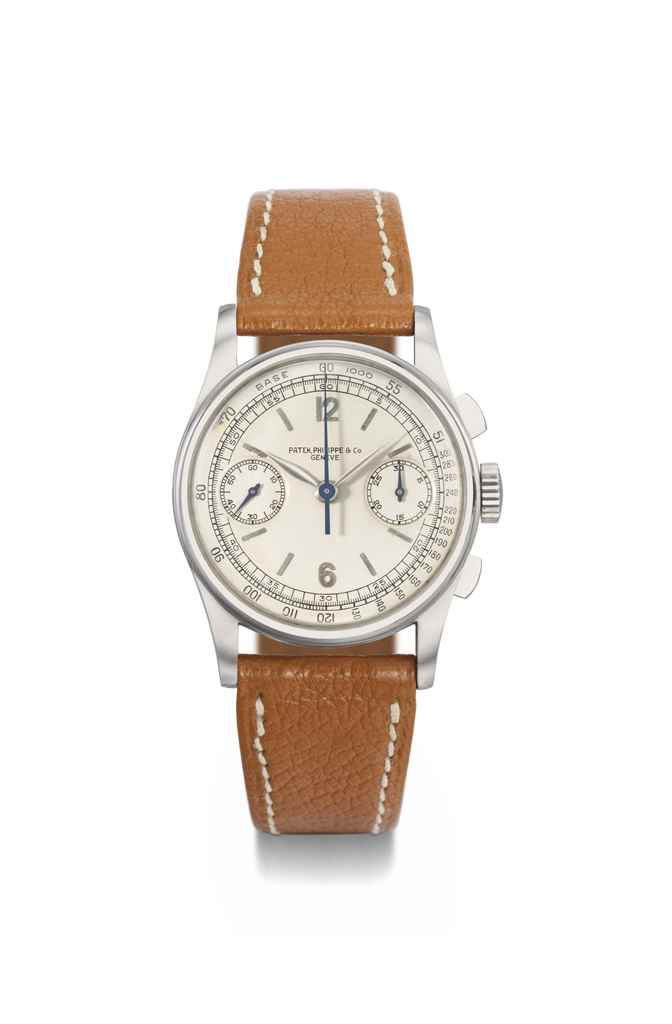A fine and rare English 11/16-inch astronomical telescope Unsigned, late 17th/early 18th Century, the telescope associated the 73-inch (185.5cm.) long brass body-tube is in three sections, secured to one another via two brass joining bands each with twelve chessehead screws. The objective lens is in fact a plain glass disc, such as one would expect to find on a sighting level. It is secured in a short threaded section of brass tube arranged to screw into the end of the body tube, with a slightly flared brass ray shade incorporated. The inner edge of the ray shade is threaded for a further attachment. The body tube has two small brass fittings attached and protruding at right angles, each with a small unthreaded hole, perhaps originally for a bubble level. Each has been deeply incised, the forward attachment with a small X , the rearward one with a small V . At the other end of the body tube, a small brass box with a short tube section slides into the aperture at the end of the body tube. This is secured by means of a small retaining screw with a shaped head. The body tube also has a threaded section on the outside at this end, presumably for an alternative eyepiece arrangement, but with the eyepiece box in place, unusable. Within the body tube at this end is a movable lens mounting (with no lens present), adjusted by means of a simple sliding lever on the outside. The brass box itself contains two parallel sighting wires. Beneath the box is a rectangular brass casing for a tangent screw adjustment arrangement which moves the lefthand sighting wire. On the outside of this casing is a small index and an engraved scale 0-40, with one unit subdivisions. The tangent screw is operated by means of a butterfly handled turning screw at the lefthand end of the casing, which incoporates a second index, this time in the form of a hand with pointing finger, arranged to read off a small vertical circle graduated 0-100 around the circumference, with one unit subdivisions. This whole unit is held in place by two lengths of brass screwed to the underside of the box to form two lips over the edge of the plate to which the mechanism is attached, and by a pierced and shaped retaining screw. The box also incorporates a smaller length of tubing (sheared off but retained) into which slides the eyepiece mount with two lenses. The body tube has the appearance of being a later replacement, adapted from a large sighting level. The original telescope would most likely have been a long vellum-bound instrument. The body tube is attached to the stand by means of two brass collars, each with a shaped retaining screw. These collars are each on a long brass rod which fits through a long horizontal piece of grained mahogany and is secured beneath by a butterfly nut. On the side of this piece are fixed brass-mounted eyepiece and objective sighting lenses. Constructed as an integral part of the mounting is a vertical half-circle of ash beneath the horizontal mahogany section, incorporating a brass declination scale around its half-circumference. This scale is numbered 80-90-0-90-80, with one degree subdivisions, and is labelled appropriately DECLINATIO AUSTRALIS and DECLINATIO SEPTENTRIONALIS . At the centre is a Zodiac scale with sigils and abbreviations for the houses of the Zodiac, Capricorn to Gemini over Sagittarius to Cancer. The lower edge of the half-circle has a racked brass attachment for adjustment via a tangent screw, and the whole mounting section is fixed via a square-headed screw and butterfly nut between two bevelled ash A-frame supports terminating in a round base. One of these supports is pierced to allow a reading off the vertical scale, and a vertical brass wire is fixed in the aperture for an accurate reading. A retaining screw on the other side keeps the vertical half-circle in position, or allows for its adjustment via a rack and pinion arrangment housed in the round base of the A-frame supports. The tangent screw is adjusted via a brass ro
A fine and rare English 11/16-inch astronomical telescope Unsigned, late 17th/early 18th Century, the telescope associated the 73-inch (185.5cm.) long brass body-tube is in three sections, secured to one another via two brass joining bands each with twelve chessehead screws. The objective lens is in fact a plain glass disc, such as one would expect to find on a sighting level. It is secured in a short threaded section of brass tube arranged to screw into the end of the body tube, with a slightly flared brass ray shade incorporated. The inner edge of the ray shade is threaded for a further attachment. The body tube has two small brass fittings attached and protruding at right angles, each with a small unthreaded hole, perhaps originally for a bubble level. Each has been deeply incised, the forward attachment with a small X , the rearward one with a small V . At the other end of the body tube, a small brass box with a short tube section slides into the aperture at the end of the body tube. This is secured by means of a small retaining screw with a shaped head. The body tube also has a threaded section on the outside at this end, presumably for an alternative eyepiece arrangement, but with the eyepiece box in place, unusable. Within the body tube at this end is a movable lens mounting (with no lens present), adjusted by means of a simple sliding lever on the outside. The brass box itself contains two parallel sighting wires. Beneath the box is a rectangular brass casing for a tangent screw adjustment arrangement which moves the lefthand sighting wire. On the outside of this casing is a small index and an engraved scale 0-40, with one unit subdivisions. The tangent screw is operated by means of a butterfly handled turning screw at the lefthand end of the casing, which incoporates a second index, this time in the form of a hand with pointing finger, arranged to read off a small vertical circle graduated 0-100 around the circumference, with one unit subdivisions. This whole unit is held in place by two lengths of brass screwed to the underside of the box to form two lips over the edge of the plate to which the mechanism is attached, and by a pierced and shaped retaining screw. The box also incorporates a smaller length of tubing (sheared off but retained) into which slides the eyepiece mount with two lenses. The body tube has the appearance of being a later replacement, adapted from a large sighting level. The original telescope would most likely have been a long vellum-bound instrument. The body tube is attached to the stand by means of two brass collars, each with a shaped retaining screw. These collars are each on a long brass rod which fits through a long horizontal piece of grained mahogany and is secured beneath by a butterfly nut. On the side of this piece are fixed brass-mounted eyepiece and objective sighting lenses. Constructed as an integral part of the mounting is a vertical half-circle of ash beneath the horizontal mahogany section, incorporating a brass declination scale around its half-circumference. This scale is numbered 80-90-0-90-80, with one degree subdivisions, and is labelled appropriately DECLINATIO AUSTRALIS and DECLINATIO SEPTENTRIONALIS . At the centre is a Zodiac scale with sigils and abbreviations for the houses of the Zodiac, Capricorn to Gemini over Sagittarius to Cancer. The lower edge of the half-circle has a racked brass attachment for adjustment via a tangent screw, and the whole mounting section is fixed via a square-headed screw and butterfly nut between two bevelled ash A-frame supports terminating in a round base. One of these supports is pierced to allow a reading off the vertical scale, and a vertical brass wire is fixed in the aperture for an accurate reading. A retaining screw on the other side keeps the vertical half-circle in position, or allows for its adjustment via a rack and pinion arrangment housed in the round base of the A-frame supports. The tangent screw is adjusted via a brass ro















Testen Sie LotSearch und seine Premium-Features 7 Tage - ohne Kosten!
Lassen Sie sich automatisch über neue Objekte in kommenden Auktionen benachrichtigen.
Suchauftrag anlegen